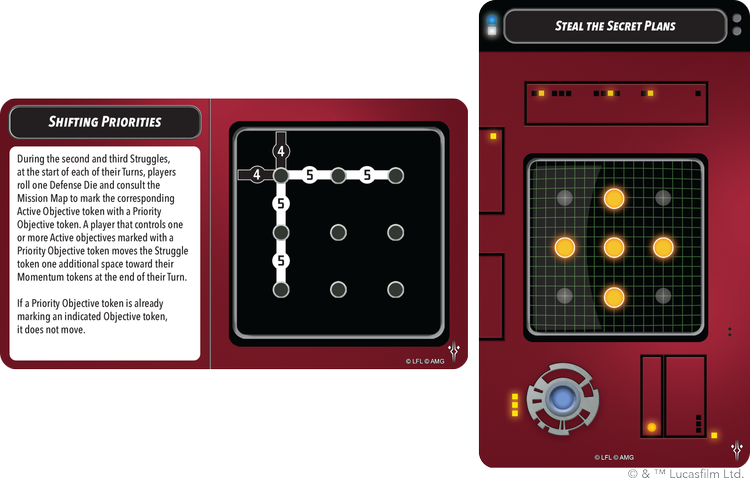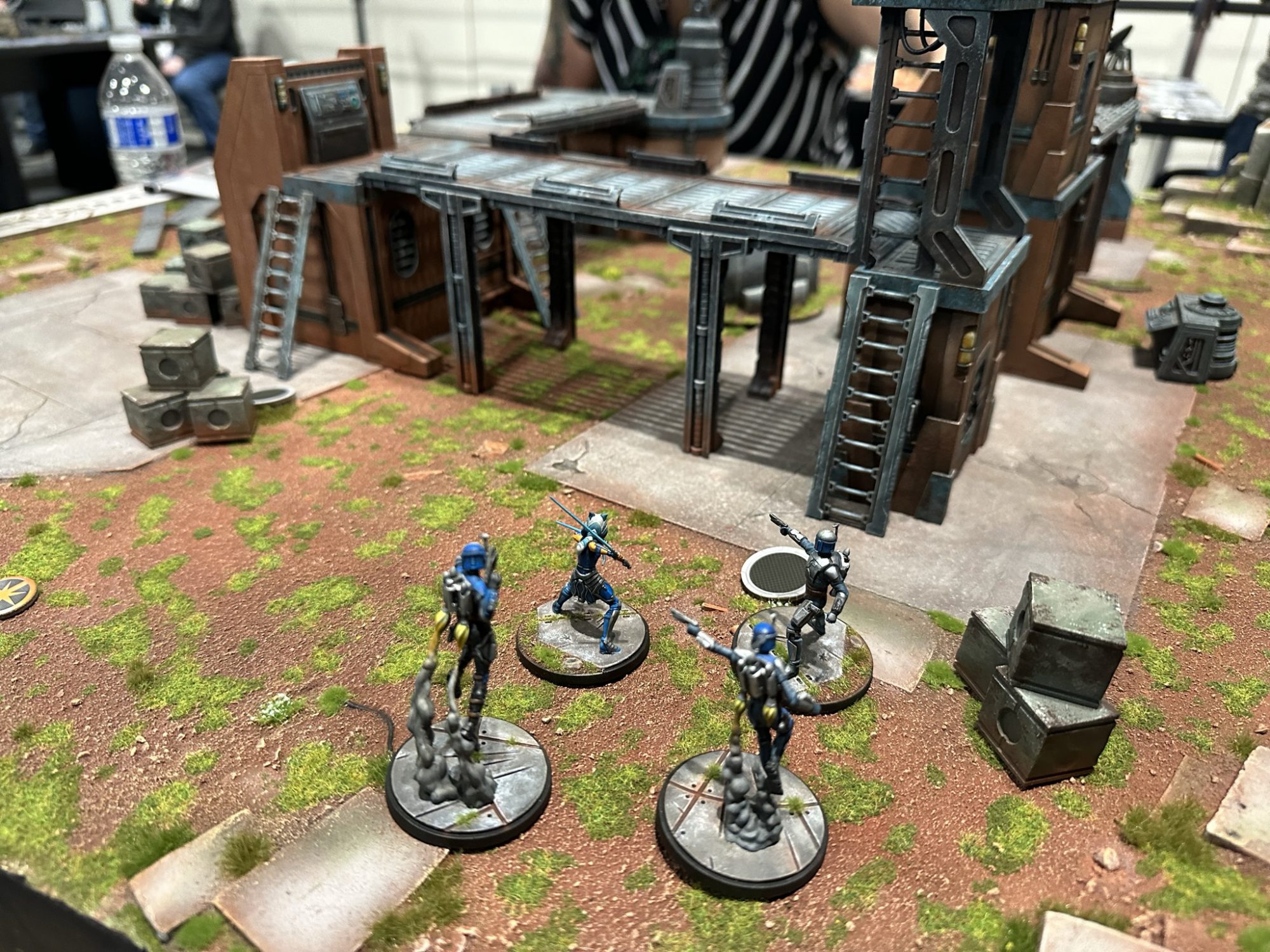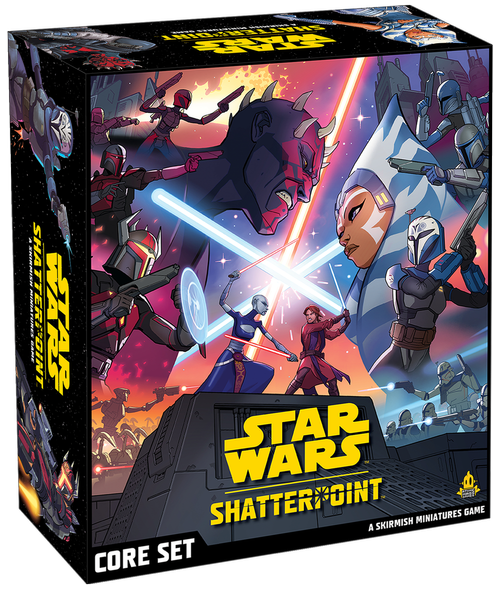Late last year Atomic Mass Games—publishers of Marvel Crisis Protocol, Star Wars: Armada, etc—announced a skirmish scale game set in a galaxy far, far, away. Titled Star Wars: Shatterpoint, the games core box is set in the Clone Wars era and it set the hobby community and the Goonhammer offices alight.
The press release describes Shatterpoint as a “love letter to the excitement and energy of being a kid on Saturday mornings” which fits with the Clone Wars setting. All of the art posted and the images of Asaj Ventress and Ahsoka Tano immediately draws us to the Clone Wars TV show over the Star Wars prequel films. Finally.

I’m an unapologetic lover of the Clone Wars era and TV show and Ahsoka in particular is one of my all time favorite Star Wars characters. I was immediately excited about the announcement and couldn’t wait to give it a shot.
We at the Goonhammer offices have been following along as AMG drip fed bits of rules; now they have been posted in full. Additionally some of us were able to play demos of the game at Adepticon this year so we figured it was about time to share our first impressions and highlights.
Shatterpoint
In addition to referencing a Mace Windu novel of the same name, a shatterpoint in the Star Wars universe refers to a moment of critical importance in the struggle of light vs dark. It is in these immediate moments that a game of Shatterpoint is played.
The structure of the game is what jumped out to me the most during the demo. The game represents a mission made up of 2 or 3 struggles. At the start of the Mission (game) players will set up a number of inactive objectives according to the Mission set up. Then they’ll draw a Phase I struggle card which will specify which objectives are active. For the first struggle only those objectives are relevant.

Conflict is a bit of a tug-of-war and represented by a tug-of-war style track. At the end of your turn you’ll pull the struggle marker towards your side of the track based on your objective control. On your opponent’s turn it will move back. The goal is to pull that marker far enough along the track that it reaches your Momentum marker.
Each player’s Momentum marker starts at their respective ends of the track, however various things cause you to add more of them. Wound an enemy character? Add another Momentum marker. Finish your turn with the struggle marker on your opponent’s side? Add another Momentum marker. As the struggle goes on, the amount you’ll need to pull the struggle marker towards your side goes down.

Once someone has won a struggle the game does not end. At this moment you draw a Phase II struggle and reset the objectives. Notably, your characters do not reset. Only the active/inactive objectives and the struggle track reset. Suddenly your characters may be out of position as the strategic focus of the game shifts to a different part of the battlefield. You’ve got to shift plans, react to new information, all while your characters health/status/position remains where they were at the end of the first struggle. First to win two struggles wins the mission.
I love this structure. Some struggles will give a set-up advantage to the player who lost the previous struggle giving you tactical flexibility. If it’s clear you’re going to lose the first struggle you can begin repositioning to give you a leg up on the 2nd. There are multiple mission decks and each deck has multiple struggle cards for each phase, so while you’ll be able to have a general idea of your goals you can’t script exactly how things will play.
I also like the momentum aspect. The rules have built in both snowballing and rubberbanding mechanisms in a way that will accelerate stakes and tension. My demo was only a few turns and I didn’t get to experience the full struggle but it was clear that there is an element of tactical maneuvering here.

Combat
The other thing that jumped out to me was combat. Shatterpoint is a relatively low model-count game with basic alternating activations and a two-action limit. This leaves room in the design space for increasing the complexity of some systems and combat is a big winner here.
Combat is resolve by forming a pool of attack dice and rolling them against a defender’s pool of defense dice. There’s some intricacies here I’ll get into in a second but at the end of the rolling the attacker is hoping to end up with some number of successes.
Once you’ve got your number these success are more than simple damage: they are spent along a combat track that is unique to each character and even unique to that characters specific stance at the time. Yes, most points along the movement track deal damage but most also provide more. Tactical movement, status effects, and more are available as you progress deeper into a track and many characters have branching paths. In the middle of Anakin’s track you’ll have the choice of pinning your opponent in place or giving yourself a Jump movement.

This opens up enormous strategic potential and gives players a tremendous ability to react to the changing battlefield that you can see here in Maul’s more complex track.

The top branch allows for status effects and effective evasive movement, letting Maul hamper his target (Strained effects deal damage when the target tries to move) while also quickly disengaging and moving away. The middle row pushes the opponent quite a bit of distance, potentially clearing objectives, while the bottom just opens up raw damage ending with a shove.
The other layer of complexity in combat comes via Expertise. Both attack and defense dice have expertise symbols. These unlock various things depending on the character. Maul piles on raw damage while Anakin piles on successes which enable tactical options while further differentiating characters.

Wrap Up
There is a lot more to Shatterpoint. It’s a game of quick back and forth turns played over a board full of elevated terrain. My demo easily captured the feel of shows like Clone Wars and Rebels where battles are fast and furious, where heroes summon reserves to succeed in the face of long odds, or villains never-stay-down and rise to foil plans.
This is the beginning of regular ongoing Shatterpoint content, so stay tuned!


